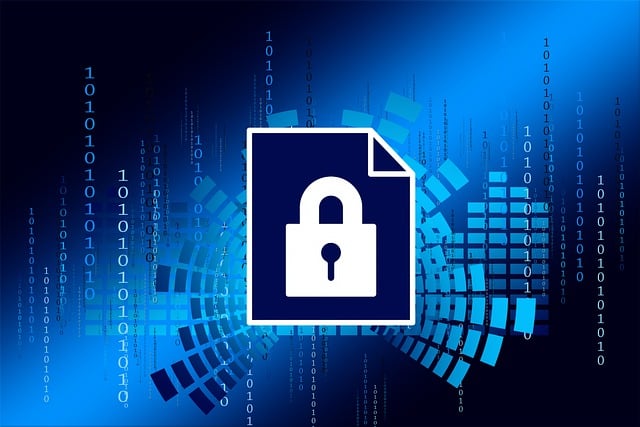Executive protection specialists utilize advanced surveillance technologies, such as GPS tracking, facial recognition software, and drone surveillance, to mitigate unique risks associated with safeguarding corporate leaders and government officials. By leveraging data analysis and threat intelligence, they predict potential threats, enabling proactive security strategies. While these tools enhance safety, specialists must navigate ethical challenges, balance privacy concerns, and adhere to legal regulations, ensuring discreet and responsible use of advanced methods for unparalleled client protection.
In today’s complex landscape, ensuring the safety of executives is more critical than ever. Advanced surveillance and monitoring have emerged as essential tools for executive protection specialists, who play a pivotal role in mitigating risks. This article explores cutting-edge technologies and strategies used by these experts to safeguard high-profile individuals both publicly and privately. From sophisticated surveillance systems to data-driven threat intelligence, we delve into the comprehensive approach to executive protection, highlighting ethical considerations along the way.
Understanding Executive Protection: The Role of Specialists
Executive protection is a specialized field that requires dedicated professionals to safeguard high-profile individuals, often corporate leaders and government officials. These executives face unique risks due to their prominent positions, making it crucial to enlist the expertise of executive protection specialists. These specialists are trained to anticipate and mitigate potential threats, employing a range of strategies from physical security measures to advanced surveillance techniques.
Their role involves comprehensive risk assessments, developing tailored security plans, and implementing discreet yet robust monitoring systems. With access to cutting-edge technology, they enhance situational awareness, ensuring executives remain secure in even the most dynamic environments. Executive protection specialists play a vital part in managing vulnerabilities, thereby enabling their high-profile clients to focus on core responsibilities without constant concern for their safety.
Advanced Surveillance Technology: Tools for Modern Safety
Advanced surveillance technology has become an indispensable tool for executive protection specialists, who are tasked with ensuring the safety and security of high-profile individuals. With threats evolving and becoming more sophisticated, modern safety measures require cutting-edge tools to stay ahead. These technologies offer a comprehensive approach to monitoring, providing real-time data and alerts that enable quick response times.
From GPS tracking devices to advanced facial recognition software and drone surveillance, executive protection specialists now have an array of options to enhance their operations. These innovations allow for continuous observation, risk assessment, and early detection of potential dangers. By leveraging such technology, specialists can better anticipate and mitigate risks, ensuring the safety of their clients in both familiar and unfamiliar environments.
Monitoring Strategies: Protecting Executives in Public and Private Spaces
In today’s complex and dynamic world, monitoring strategies for executive protection specialists have evolved significantly to ensure safety in both public and private spaces. For executives frequently navigating high-risk environments, a comprehensive surveillance approach is imperative. Executive protection specialists leverage advanced technologies such as GPS tracking devices, real-time location systems, and biometric sensors to monitor and predict potential threats. These tools enable continuous monitoring, allowing specialists to anticipate and mitigate risks promptly.
In public spaces, executive protection specialists employ discreet observation techniques, utilizing a network of informants and local knowledge to identify suspicious activities or individuals. Simultaneously, in private settings, advanced home security systems, including motion sensors, access control mechanisms, and video surveillance, create layered defenses. By combining these monitoring strategies, executives receive unparalleled safety assurance, ensuring peace of mind as they go about their high-profile responsibilities.
Data Analysis and Threat Intelligence: Predictive Safety Measures
Advanced surveillance and monitoring systems are transforming executive protection, incorporating data analysis and threat intelligence to anticipate risks. Executive protection specialists leverage sophisticated algorithms and historical data to identify patterns indicative of potential threats. By understanding typical behavior and activities, these systems can predict unusual activities that may signal a heightened risk, enabling proactive safety measures.
This predictive approach allows for more efficient resource allocation and tailored strategies. Executive protection specialists can focus on high-risk scenarios, ensuring the safety of their clients by one step ahead of potential threats. This integration of data analysis and threat intelligence is revolutionizing executive protection, making it a game-changer in ensuring the security of high-profile individuals.
Ethical Considerations: Privacy, Legalities, and Professionalism
The advancement of surveillance technologies brings both remarkable benefits and complex ethical dilemmas for executive protection specialists. While real-time monitoring and advanced analytics can significantly enhance safety protocols, they also raise significant privacy concerns. Executive protection specialists must balance the need for comprehensive coverage against potential invasions of personal space and the right to privacy. Each client and situation is unique, requiring careful consideration of the level of surveillance appropriate and proportional to the risks involved.
Moreover, legalities play a crucial role in shaping the ethical landscape. As technology evolves, so do regulatory frameworks governing data collection and monitoring. Executive protection specialists must stay abreast of these legal nuances to ensure compliance and avoid potential liabilities. Maintaining professionalism is paramount; employing sophisticated surveillance methods should be done discreetly and ethically, upholding the highest standards of conduct and respect for individual rights.
In conclusion, the integration of advanced surveillance and monitoring technologies plays a pivotal role in enhancing executive safety. Executive protection specialists leverage cutting-edge tools, from sophisticated monitoring strategies to data analysis and threat intelligence, to predict and mitigate potential risks. However, as these practices evolve, it’s paramount to balance security measures with ethical considerations, ensuring privacy, upholding legalities, and maintaining the highest standards of professionalism in the realm of executive protection.
